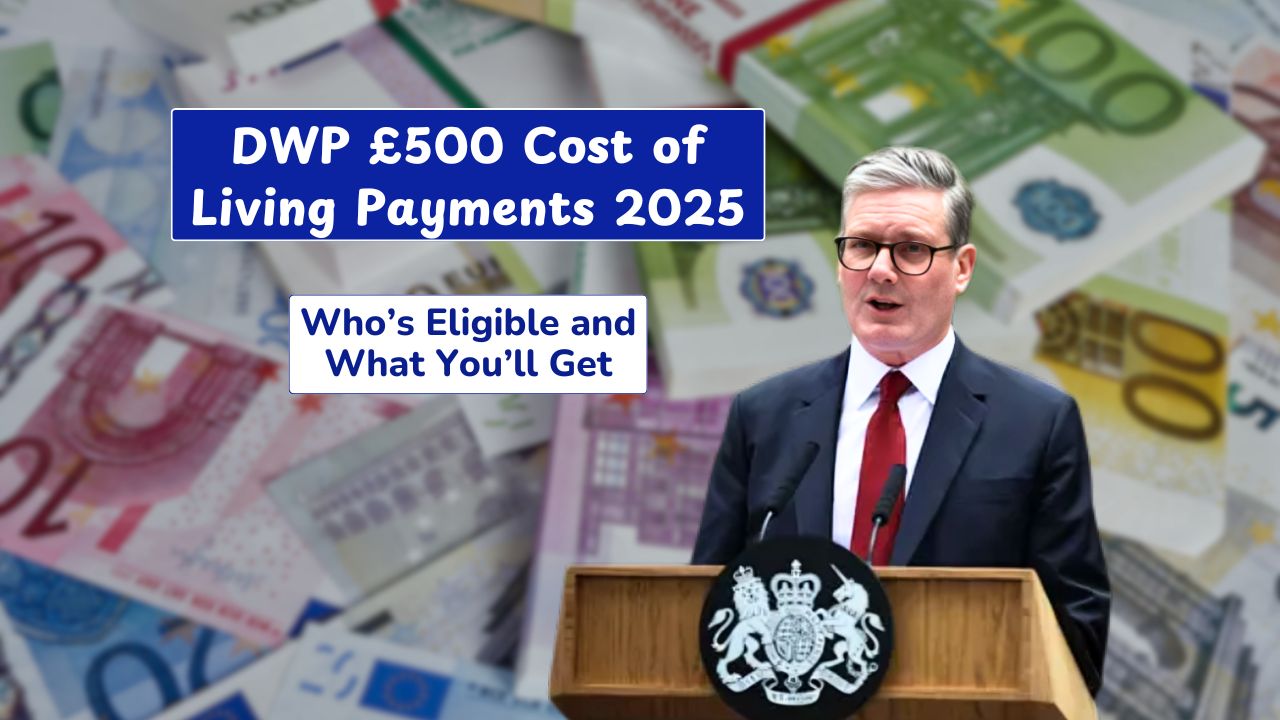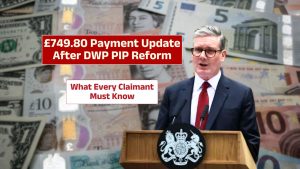With prices continuing to rise across the UK, the government’s 2025 Cost of Living Payments offer much-needed financial relief. Essentials like groceries, gas, and rent are becoming harder to afford, especially for low-income households.
That’s why the Department for Work and Pensions (DWP) has created a three-phase support scheme to help vulnerable people manage seasonal living costs.
Here’s everything you need to know, from how much you can receive, when you’ll get it, who qualifies, and how it’ll be paid.
Overview
The 2025 Cost of Living Payments are part of a larger government plan to reduce the financial burden on low-income and vulnerable individuals. The idea is to align financial support with the periods when expenses are typically higher—like energy bills in winter or travel and food in summer.
This financial aid will be paid automatically to qualifying households, without the need for applications. It’s designed to offer up to £500 over three scheduled phases during the year.
| Topic | Details |
|---|---|
| Payment Amount | Up to £500 total |
| Payment Phases | March–May, July–August, Oct–Dec |
| Eligibility | Must receive qualifying benefits |
| Application Required? | No – automatic based on benefits |
| Payment Method | Direct bank deposit |
| Support for Disabled | Extra support available |
| Additional Schemes | Warm Home Discount, Household Fund |
| Official Site | https://www.gov.uk |
Phases
The payments will be made in three automatic instalments. Each phase is timed with common seasonal spending needs to make the support more practical and timely.
The first phase runs from March to May 2025, and eligible individuals will receive £301. This instalment is meant to help offset the high cost of winter energy bills that often carry over into early spring.
The second phase is scheduled for July to August 2025. During this time, claimants may receive up to £200. This payment is designed to cover increased costs during summer months, such as higher food prices, childcare, and travel expenses.
The third and final phase will be from October to December 2025. This payment will include the remaining balance needed to bring the total annual support up to £500. It’s aimed at giving households a financial cushion before the start of another costly winter season.
Eligibility
To qualify for these payments, you must be receiving certain income-related benefits during specific DWP assessment periods.
These benefits include Universal Credit, Pension Credit, Income Support, income-based Jobseeker’s Allowance (JSA), income-related Employment and Support Allowance (ESA), Housing Benefit, or Working Tax Credit or Child Tax Credit in applicable scenarios.
If you are receiving any of these benefits during the qualifying windows, you don’t need to do anything else. The payments will be issued automatically based on your benefit status.
Support
In addition to the basic payment, the scheme offers enhanced support for individuals facing higher living costs due to disability or caregiving responsibilities.
You may receive additional help if you are getting disability-related benefits such as Personal Independence Payment (PIP), Disability Living Allowance (DLA), or Attendance Allowance.
If you’re a carer supporting someone with a disability or use medical equipment that increases your home energy usage, you may also be eligible for extra support.
This added assistance can help offset unavoidable expenses like electricity for medical devices or mobility-related transport costs.
Delivery
The DWP will deposit these payments directly into the bank account connected to your benefit claim. Since everything is handled automatically, it’s important to make sure your details are accurate and up to date.
To avoid delays or issues, check that your bank information with the DWP is current. Also, monitor your mail or online account for any communication from the DWP regarding payment schedules or changes. If a payment doesn’t arrive on time, contact the DWP helpline immediately to get it sorted.
Impact
According to data from the Office for National Statistics, around one in four UK households struggled to meet daily expenses in 2024. With inflation still pushing up the cost of essentials, these payments are a crucial buffer for people with limited or fixed incomes, such as pensioners or disabled individuals.
They offer a financial lifeline to help manage heating, groceries, and travel expenses that cannot be avoided, especially during times of the year when costs spike.
Extras
The 2025 Cost of Living Payments are just one part of a wider safety net. Two other key schemes are available to support low-income households this year.
The Warm Home Discount Scheme is a government initiative that provides a direct discount on electricity bills. It usually offers up to £150 off winter heating costs.
The Household Support Fund is distributed by local councils and offers targeted emergency grants to help cover essential expenses like food, energy, and other critical needs.
The amount varies depending on the local authority but can be a valuable resource during tough times.
| Scheme | Description | Typical Benefit |
|---|---|---|
| Warm Home Discount | Discount on winter electricity bills | Up to £150 |
| Household Support Fund | Local council emergency help for essentials | Varies by council |
Together, these programs offer a layered approach to financial assistance, helping households stay afloat amid ongoing economic pressure. If you’re eligible, make sure to take full advantage of what’s available in 2025.
FAQs
When will I receive my payment?
Payments will be made in three phases: March–May, July–August, and October–December 2025.
Do I need to apply for the payment?
No, payments are automatic if you’re eligible during the assessment period.
What benefits make me eligible?
You need to be on Universal Credit, Pension Credit, or similar income-based benefits.
How will I get the money?
Funds are sent via direct deposit to your bank account linked to benefits.
Can I get more if I’m disabled?
Yes, enhanced payments are available for those receiving disability-related benefits.



